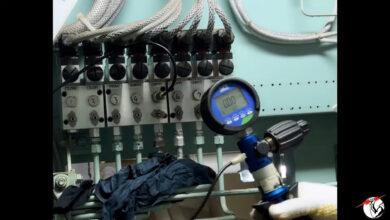Why Cleaning a Freshwater Generator Condenser Is the DIY You’ll Regret Skipping
How to Clean a Freshwater Generator Condenser: A Sarcastic Guide for Aspiring Shipboard DIYers 🚢
Ahoy, junior engineers and overachieving DIYers! Ready to dive into the glamorous world of marine maintenance? Today’s thrilling episode: cleaning a condenser for a freshwater generator onboard ships. Because nothing screams excitement like removing salt deposits and inspecting zinc anodes, right? Let’s set sail on this sparkling sea of tube-cleaning knowledge. ⚙️
⚠️ Safety First! Because We Like Our Eyes Where They Are
Before you jump into this salty mess, remember:
- Stop the generator: Seems obvious, but hey, someone out there thinks you can clean it while it’s running. Don’t be that person. 🛑
- Close those seawater valves: Both inlet and outlet. Why? Because we don’t need a surprise seawater shower today.
- Gear up: Goggles aren’t just a fashion statement—they’ll save your eyes when things start “flying like rockets.” 🚀
Step-by-Step Guide: AKA “The Fun Part” 🤓
1. Stop the Freshwater Generator
No, seriously. Just stop it. If you forget, don’t come crying when seawater sprays everywhere. (Also, stop pretending you didn’t see this step.)
2. Get Those Tools Ready
- Use a pneumatic tool for the bolts. Why? Because manual labor is so last century.
- And please, for the love of all things nautical, use the right size box spanner. Using the wrong one will only lead to stripped bolt heads, endless frustration, and possibly your crewmates questioning your competency.
3. Remove the Condenser Cover
- Spoiler alert: It’s heavy. Like, really heavy. Chain blocks are your best friend here.
- Pro tip: If you think lifting it solo is a good idea, it’s also a great way to discover how fast ship doctors respond to back injuries.
4. Inspect the Tubes
- Oh, they’re not choked? Lucky you. But you still have to clean them because protocol demands it. Every three months, remember?
- Use a brush and fresh water to manually clean them. It’s like brushing teeth—except the “teeth” are giant tubes covered in salt deposits. 🪥
5. Check the Zinc Anodes
- Remove the anode flange. If it’s still functional (despite the salt deposits making it look like a coral reef), good news: you can reuse it. Otherwise, replace it and move on.
- Remember to buffer the anodes. No one likes a rough, unpolished anode.✨
6. Change the Gaskets
- If you open a flange, always replace the gasket. Don’t try to reuse the old one unless you love troubleshooting leaks later.
7. Fit Everything Back
- Reassemble the condenser cover carefully. Tighten all bolts properly because no one wants to redo this circus.
- Use a rubber gasket for a snug fit. And double-check everything, because who has time for leaks after a “simple” cleaning job?
8. Reopen the Seawater Valves and Test
- Turn the seawater line back on and inspect for leaks. If your sensor isn’t leaking, congratulations—you didn’t mess it up. 🎉
Common Mistakes: Learn What NOT to Do 🙃
- Skipping safety gear: Want a flying bolt to the eye? No? Wear the goggles.
- Using the wrong tool size: Your bolts don’t want to be stripped, and your ego doesn’t want to explain why they are.
- Not replacing gaskets: Old gaskets are betrayal waiting to happen. Replace them now or suffer the consequences.
- Underestimating the weight of the cover: Newsflash: You’re not Superman. Use the chain block.
Wrapping Up: Because You’re Basically an Expert Now 💪
And there you have it—the art of condenser cleaning demystified! Wasn’t that fun? No? Well, at least your freshwater generator will thank you for the effort. The tubes are sparkling, the anodes are buffed, and you didn’t lose an eye in the process. 🚿
If you have questions, complaints, or just want to say “this was a waste of my time,” drop them in the comments. Meanwhile, keep supporting your fellow marine warriors and stay salty—but not too salty.






